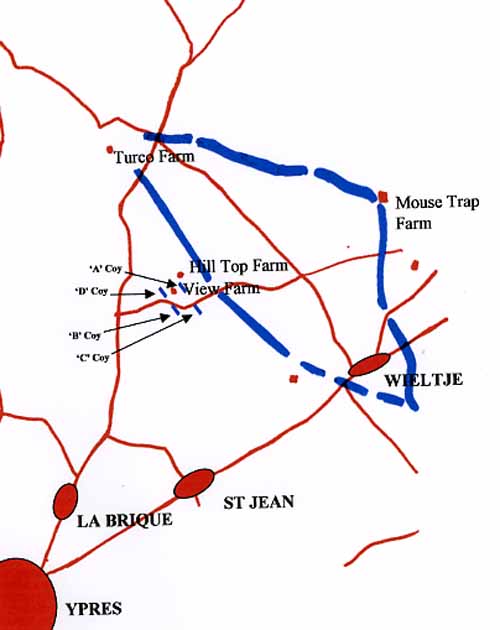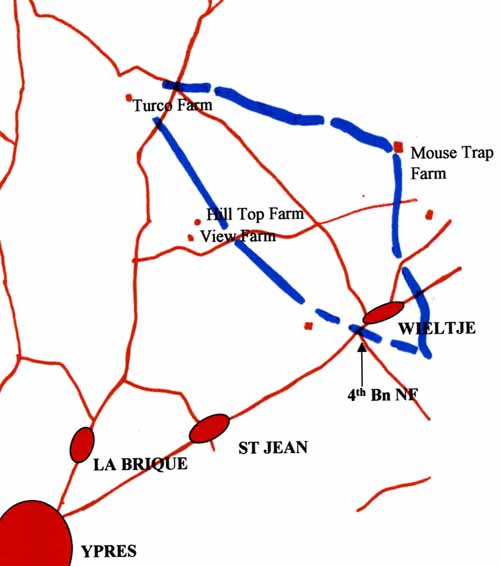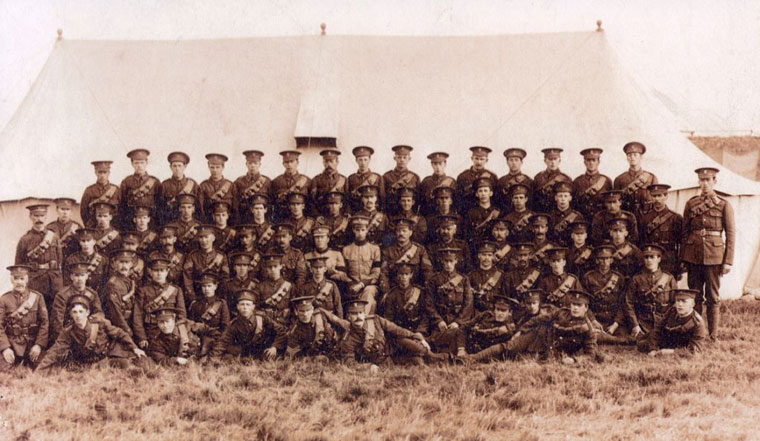Monday, 9th April 1917
When the British assault began at 5.30am on the 9th of April (Easter Monday), the 50th Division were still held in reserve, approximately 10 miles west of Arras. The 4th Bn were billeted at Beaufort 1 and the days were filled with training exercises.
At 9.30am that morning, all the Bn officers were conducting an outpost scheme on the ground between Beaufort and Manin 2 and at 2pm ‘C’ and ‘D’ Coys were exercised in a tactical scheme on the same ground.
At 11.30pm orders were issued to the three Infantry Bdes of the 50th Division to move to the Habarcq- Wanquetin area on the 10th. The 149th Bde were to occupy the Wanquetin-Hauteville area.
Tuesday, 10th April 1917
At 3pm the Bn, less ‘A’ and ‘B’ Coys, paraded opposite Beaufort church and marched via Avesnes-Le-Comte 3 and Hauteville 4 to arrive at a Nissen Hut camp at Wanquetin 5 around 5pm. The 150th Bde moved to Habarcq 6, the 151st Bde to Agnez 7, Gouves 8 and Montenescourt 9, the 7th Bn DLI (Pioneers) into Arras and Divn HQ opened in Berneville 10 at 4pm.
Wednesday, 11th April 1917
On this day the Divn was transferred from XVIII to VII Corps and commenced the relief of the 14th Divn. The 149th Bde were to take the first turn in the front line.
Training for the 4th Bn continued at Wanquetin, with‘C’ and ‘D’ Coys conducting bayonet training at 10am followed by a short march. At 3.30pm the snow began to fall again. During the afternoon the men's packs were stored and sandbags, very lights, grenades and flares were issued. A motor lorry delivered these stores to ‘A’ and ‘B’ Coys and brought their packs back to Wanquetin.
The 6th and 7th Bns set off at 5.15pm, marching eastwards straight through Arras and on to the trenches held by the 42nd Bde south of Tilloy. At 6pm, the 4th Bn (minus ‘A’ and ‘B’ Coys) paraded then marched, while the snow fell heavily, via Warlus, Dainville and Arras to Ronville Caves 11, arriving there at midnight. Guides from the 42nd Bde (14th Divn) were met at map reference - 9.27a.1.9. ' A' Coy having been relieved by the 150th Bde at Agnes-Les-Duisans 12, marched to join up with the Bn (minus ‘D’ Coy) at Warlus 13.
Despite the fact that snow was falling heavy, the men were ordered to ‘dump’ their great coats and to take only a blanket wrapped in a waterproof sheet as protection against the weather, consequently all ranks were soon in a wretched condition.
The 6th Bn took control of the trenches on the right flank of the 50th Divn sector straddling Telegraph Hill 14 and the 7th Bn the left flank. The 5th Bn moved into support, occupying the old German front line, the 4th Bn were held in reserve at Ronville Caves. The 1st line transport was stationed at the Citadelle 15 in Arras. The entire relief was complete by 3.35am.
Meanwhile, the 151st Bde moved up and relieved the 43rd Bde (14th Divn) in Ronville Caves, while the 150th Bde remained at Habarcq.
At 1am, in Ronville Caves, stores were issued to the 4th Bn:
Sandbags - 4 per man.
Flares - 2 per officer and man.
No 5 Mills Grenades - 40 per bombing section.
No 20 Hales Grenades - 40 per rifle grenade section.
Very Lights - 4 (2 white, 2 green) per officer, servant, CSM and platoon Sgt.
Thursday, 12th April 1917
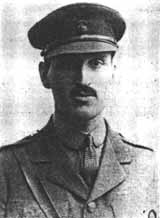
“A chilly clear aired morning, the water standing everywhere in sheets after last nights snow and rain. Arras is crammed with troops of many different divisions. The town is comparatively little damaged, but there seem to be practically no civilians”. [zotpressInText item="{ZZCPTDHK,132}"].
During the afternoon Lt Col Gibson, Major Robb and 2nd Lt Wilson reconnoitred the area around Tilloy-Les-Mofflaines 16 and Telegraph Hill . ‘B’ Coy marched from Beau tz Les L… and joined the 4th Bn at 9pm.
At midnight on the 12th GOC 50th Divn assumed command of the front line sector and Divisional HQ opened in Arras. The new sector was the northern part of the Hindenburg Line 17 and had only been captured during the attacks carried out between the 9th and 12th of April.
"The new sector occupied by the 50th Divn was on the ridge immediately east of the villages of Wancourt and Heninel. The river Cojeul ran north-easterly through Heninel past the eastern outskirts of Wancourt and then taking a sharp turn eastwards just south of Guemappe. The left flank of the Divn front rested on the river east of Wancourt, the right on the well defined building known as the Wancourt Tower, which stood upon the ridge east of Wancourt and Heninel. Southeast, but beyond the Divn right boundary lay Cherisy, while directly ahead was Vis-en-Artois. Guemappe, also in the German lines, was north of the Cojeul on the left front of the 50th Divn; machine gun fire from the village could rake the Divn front line in enfilade”. [zotpressInText item="{4R6FADJ9,207}"]
Friday, 13th April 1917
Early on the 13th patrols carried out by the 9th Bn DLI reached the Cojeul River and dug in fifty yards east of Wancourt Tower 18.
At 11am, officers from 4th Bn HQ and each Coy reconnoitred the route from Ronville Caves to The Harp 19 (near Telegraph Hill). At 1pm Major Robb reconnoitred the route from Ronville Caves to Wancourt.
At 5pm the officers and men who had been detailed to remain behind when the Bn went into action marched back to billets in Arras.
That night, two Coys of the 9th Bn DLI were holding the front line from Wancourt Tower northwards for about six to seven hundred yards, and two coys were in a sunken road just east of the Cojeul River. Meanwhile orders had been issued that the VI and VII Corps would again advance on the 14th.
Saturday, 14th April 1917
The 151st Bde was to advance the attack in order to protect the left flank of the 56th Divn, who were tasked with capturing Cherisy, and form a defensive flank facing north along the high ground roughly just south of the 80 metre contour, with their left flank in Wancourt Tower. Zero hour was set for 5.30am. The 6th DLI would advance at zero hour with the 8th Bn DLI and 5th Bn Borders following later. This attack met with some success with the 6th Bn DLI reaching German trenches just south of Wancourt Tower. Wancourt Tower was destined to become the scene of continual fighting during the next few days because it commanded a view of all the Divns approaches from Telegraph Hill.
At 5.30pm the 4th Bn moved in coy and platoon order from Ronville Caves to the north end of 'The Harp' by the route reconnoitred earlier. The first to arrive discovered that the 7th Bn, whose positions the Bn were supposed to take over, were still there, so they had to lay down to the rear of the trench. However, during the move orders were received to move to 'Cojeul Switch' at the south end of 'The Harp' (map ref: N7A).
At 8pm, once the 5th Bn had moved forward from its positions, the Bn moved in.
The First Battle of the Scarpe officially ended on this day, however the 4th Bns involvement with this sector had only just begun.
Sunday, 15th April 1917
The 149th Bde relief of the 151st Bde was completed early in the morning. The 6th Bn assumed control of the trenches previously held by the 9th DLI and after ejecting the enemy established a post between the opposing lines in the ruins of Wancourt Tower. The 7th Bn manned the support lines with two Coys in Nepal Trench 20 and two along the bank east of the river Cojeul, the 5th Bn were in Niger Trench 21 and the 4th Bn in Cojeul Switch 22.
At 3.30pm the enemy were observed attempting to dig a sap towards Wancourt Tower, but a platoon from the 6th Bn were successful in thwarting this. A communication trench was subsequently dug running from the front line to the north of the tower. Two enemy bombing attacks were repulsed by the 6th Bn.
The 4th Bn remained in in The Harp (South) and Cojeul Switch throughout the day.
Bibliography:
[zotpress items="WPX27IS4" style="harvard1"]
[zotpress items="HUXKQ9EA" style="harvard1"]
[zotpress items="4R6FADJ9" style="harvard1"]
[zotpress items="ZZCPTDHK" style="harvard1"]
[zotpress items="NIH8ZEWS" style="harvard1"]
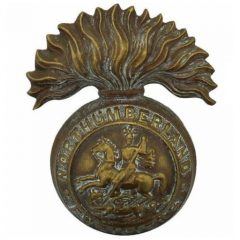
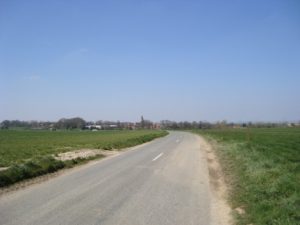
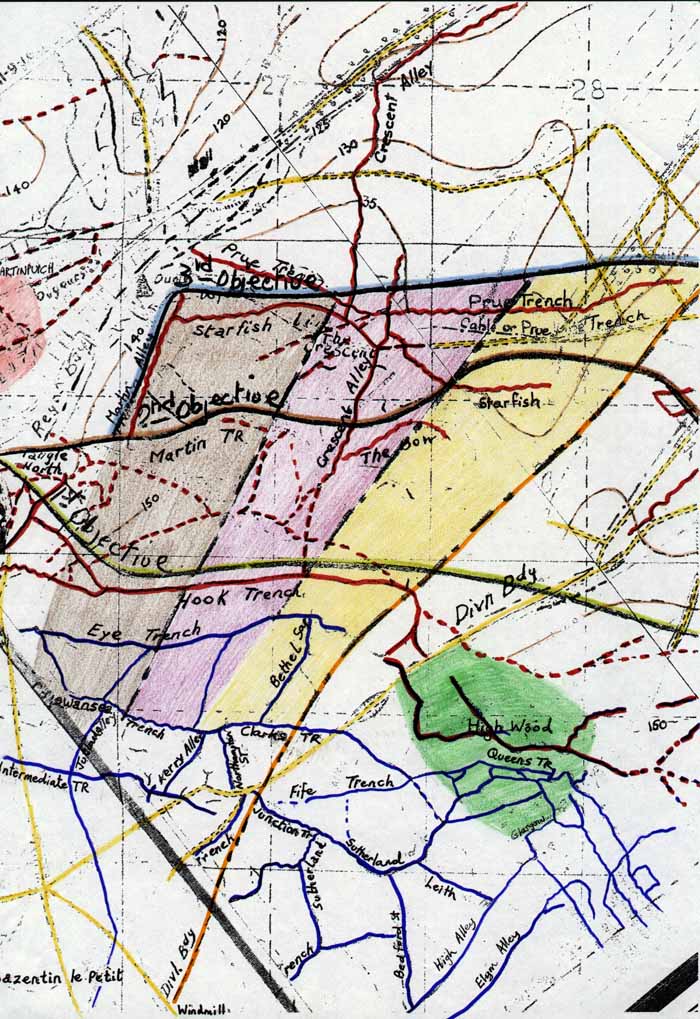
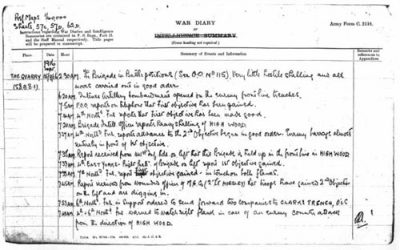
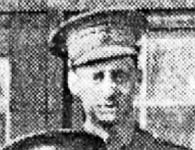
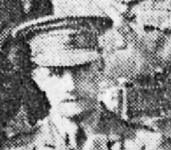
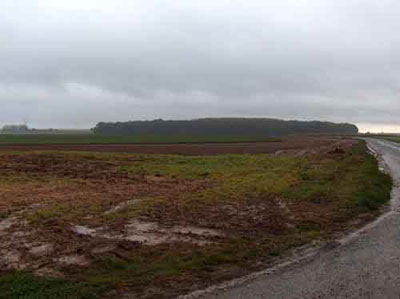
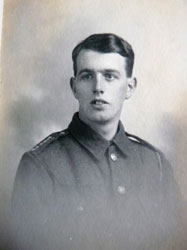
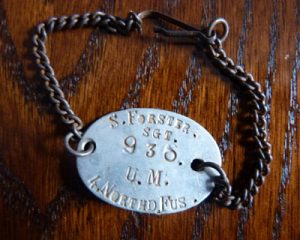
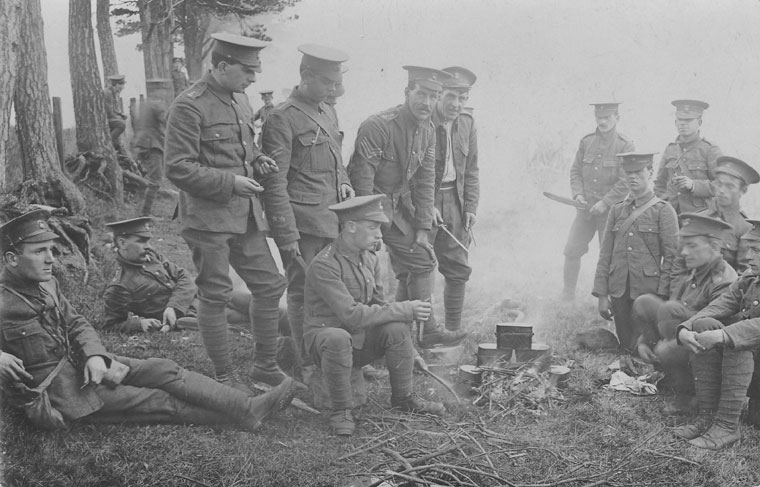
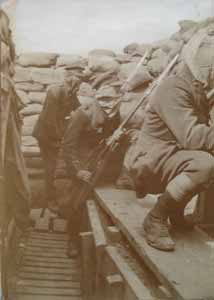 'We moved off about 5am, there having been no time for breakfast and most of us had to go with our water bottles empty, as the water carts were not up, and the water at the farm near at hand had been condemned' [zotpressInText item="{6C9UZ7VX}"].
'We moved off about 5am, there having been no time for breakfast and most of us had to go with our water bottles empty, as the water carts were not up, and the water at the farm near at hand had been condemned' [zotpressInText item="{6C9UZ7VX}"].